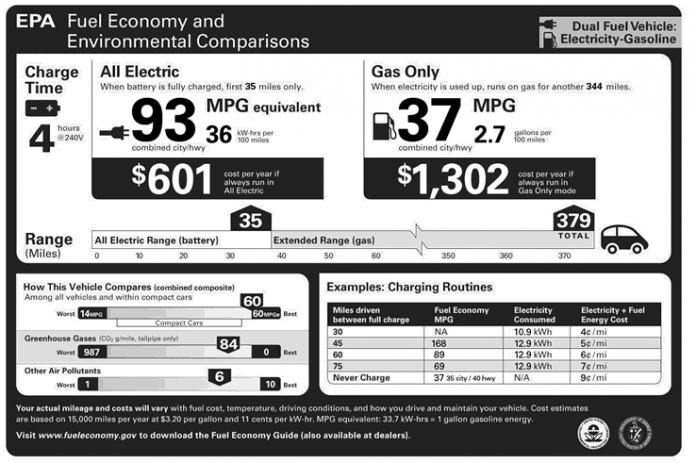The U.S. Environmental Protection Agency (EPA) announced new, more stringent emissions regulations on everyday passenger cars and light duty trucks to be imposed on the model years 2023 through 2026.
The EPA says the updated standards were necessary to carry out President Joe Biden’s August 2021 Executive Order 13990 “Protecting Public Health and the Environment and Restoring Science to Tackle the Climate Crisis,” and to meet the goals contained in his August 5 Executive Order, “Strengthening American Leadership in Clean Cars and Trucks.” The latter order set a goal of 50 percent of all new passenger vehicle sales in the United States being zero emission vehicles by 2030.
The revision represents a shift from the Trump administration’s ‘‘The Safer Affordable Fuel-Efficient (SAFE) Vehicles Rule for Model Years 2021–2026 Passenger Cars and Light Trucks,’’ which focused on moderate carbon dioxide emission reductions while keeping affordability and vehicle safety at the forefront.
Toughest Emissions Standards Yet
The EPA’s news release says the new standards are more stringent than any in American history.
Under the new rules average fleet emissions would have decline substantially each year between model years 2023 to 2026, for cars, SUVs, and pickup trucks releasing an average of 161 grams of carbon dioxide per mile by 2026. This is equivalent to a roughly 40 mpg fuel economy standard across the fleet of vehicles sold.
“The standards finalized today are the most ambitious vehicle emissions standards for greenhouse gases ever established for the light-duty vehicle sector in the United States.” The EPA Press Office said.
The final rule emphasizes the EPA’s efforts to concentrate more on greenhouse gas emissions, and less on the costs of implementation and compliance.
“In this rule, the agency is changing its 2020 position and restoring its previous approach by finding … that it is more appropriate to place greater weight on the magnitude and benefits of reducing emissions that endanger public health and welfare, while continuing to consider compliance costs, lead time, and other relevant factors” the EPA said in the rule.
The EPA estimated the rule will result in sales of zero emission car sales rising from approximately 5 percent of all sales today to 20 percent by 2026.
EPA Ignores Safety Concerns
In pursuit of the Biden administration’s climate goals, the EPA ignored long-recognized safety concerns related to increasing fuel economy standards, says Devin Watkins, an attorney with the Competitive Enterprise Institute (CEI).
“In issuing these new rules, EPA has failed to even address what its own independent scientific experts said,” Watkins said, “The EPA’s claims of PM 2.5 harms had ‘unstated, untested, unverified, or mistaken assumptions’ including the failure ‘to distinguish between true exposure values and estimated exposure values in analyzing and presenting information,’ the agency’s expert reviewers wrote.
The EPA also ignored the unnecessary injuries and deaths research has shown past increases in fuel economy standards have resulted in, an issued raised by CEI during the comment period on the rules and in lawsuits, says Watkins.
“Additionally, EPA fails to even mention, let alone explain, the thousands of additional lives that could be saved with a less stringent standard.” Watkins said. “EPA inappropriately dismissed safety concerns raised by CEI in our public comments on the proposal.
“CEI sued EPA to have it address these safety concerns, and EPA asked the court to put that case on hold, allowing it time to addresses this problem in this new rulemaking, which it has now failed to do,” Watkins said.
Linnea Lueken (llueken@heartland.org) is a research fellow with the Arthur B. Robinson Center on Climate and Environmental Policy at The Heartland Institute.



























[…] post EPA Finalizes Aggressive Vehicle Emissions Standards for 2023 and Beyond appeared first on Heartland Daily […]